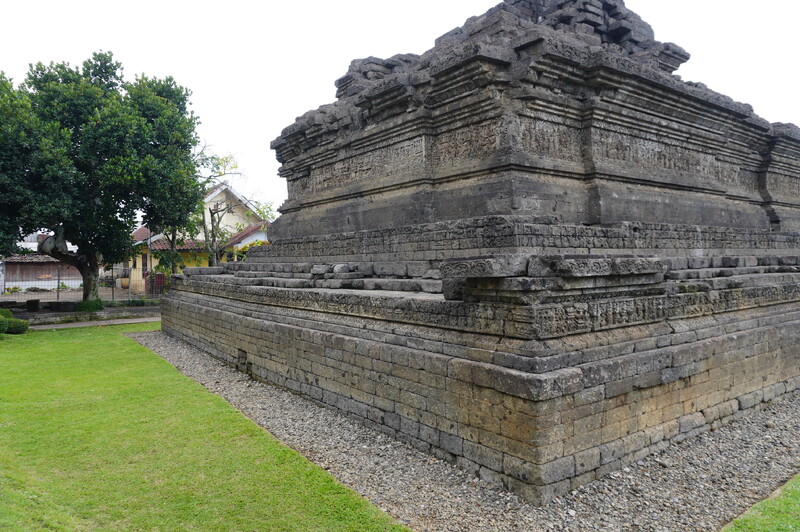Jago Temple
Item
-
Title
-
Jago Temple
-
Description
-
Candi Jago, located in Tumpang, Malang, East Java, Indonesia, is a 13th-century Hindu-Buddhist temple built during the Singhasari Kingdom. It is believed to have been constructed as a memorial for King Wisnuwardhana, a ruler of Singhasari, around 1268–1280 CE. The name "Jago" is thought to derive from the ancient Javanese word "Jajaghu," which means "glorious," reflecting its significance as a spiritual and cultural landmark. The temple's architecture and carvings illustrate the syncretism of Hindu and Buddhist influences that characterized the religious practices of the time.Physically, Candi Jago is notable for its unique stepped-pyramid design, a departure from the more vertical structures of earlier temples. The base of the temple is square, measuring approximately 23 meters on each side, with a terraced design leading to a now-missing main chamber and roof. Its walls are adorned with intricate bas-reliefs depicting scenes from Hindu epics such as the Mahabharata and Ramayana, as well as Buddhist narratives like the Jataka tales. These carvings not only highlight the temple's artistic mastery but also provide a glimpse into the moral and spiritual values of the Singhasari period.
Despite its historical significance, much of Candi Jago is in a state of ruin due to centuries of weathering and human intervention. The roof and upper structures have been lost, and some carvings have deteriorated. Nevertheless, restoration efforts have helped preserve the remaining elements, ensuring that visitors can still appreciate its beauty and historical importance. Today, Candi Jago serves as a vital link to Indonesia’s rich cultural heritage, attracting tourists, researchers, and spiritual seekers alike.
-
Identifier
-
ub002
-
Creator
-
Department of Informatics, Faculty of Computer Science, Universitas Brawijaya
-
locationCreated
-
Malang
-
Physical Description
-
Candi Jago is a Hindu-Buddhist temple made primarily of andesite stone, a durable volcanic rock widely used in ancient Javanese architecture. The temple’s base measures approximately 23 meters on each side and features a terraced, stepped-pyramid design. This multi-tiered structure is unusual compared to the vertical layout of other temples from the same era and reflects the unique architectural style of the Singhasari period.
The temple walls are adorned with intricate bas-reliefs carved into the andesite stone, depicting scenes from Hindu epics such as the Mahabharata and Ramayana, as well as Buddhist Jataka tales. These carvings cover much of the temple’s surface and display a high level of craftsmanship, showcasing both narrative and decorative elements. Some of the carvings have deteriorated over time, but many remain well-preserved, providing valuable insight into the religious and artistic practices of the era.
The upper parts of the temple, including the main chamber and roof, have been lost to time, leaving the structure in a partially ruined state. The remaining lower tiers, however, are stable, and ongoing restoration efforts aim to protect the temple from further degradation. Despite its incomplete condition, Candi Jago continues to stand as a testament to the artistic and cultural achievements of the Singhasari Kingdom.
-
location
-
Malang
-
Format
-
GLTF (*.glb)
-
Location
-
Malang
-
Date Available
-
11/26/2024



